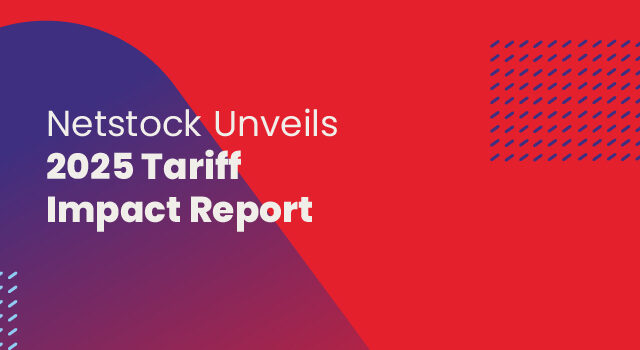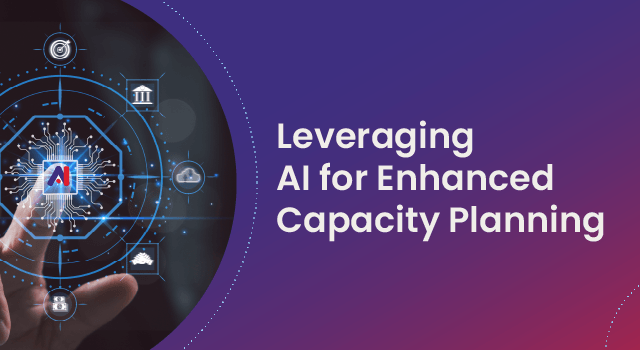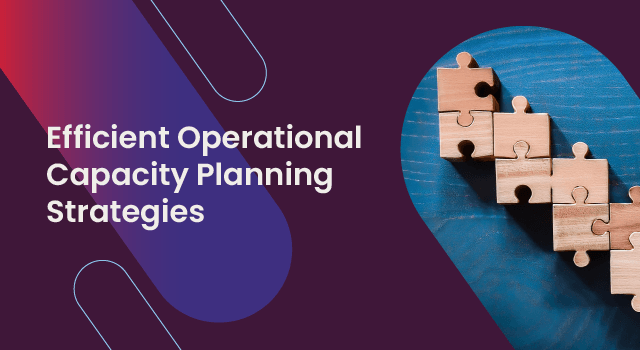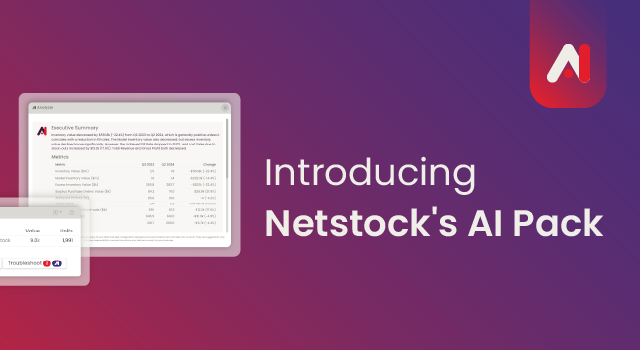Supply chains are complex, with multiple interconnected processes that rely on stable conditions. However, global markets are highly volatile, affected by economic shifts, geopolitical tensions, natural disasters, and unpredictable changes in supply and demand, all of which can disrupt operations and challenge planning efforts. Successful supply chain management depends on accurate forecasts, which guide planning and align operations with expected demand.
Although demand planning and forecasting appear similar, they are separate concepts serving distinct roles. Yet, they often get mixed up.
In this article, we’ll clarify the main differences between demand planning and forecasting and showcase great real-life examples of SMBs that nailed their demand forecasting and planning game.
Let’s start with the definitions.
Defining demand forecasting
Demand forecasting is a fundamental component of supply chain management. The insights gained from accurate forecasts are essential for effective demand planning and decision-making.
What is demand forecasting?
Demand forecasting is a forward-looking process of predicting future customer demand by analyzing historical data, market trends, and demand patterns.
Traditionally, demand planners tracked this data manually with spreadsheets. However, the introduction of demand and supply planning solutions and emerging technologies, such as AI and machine learning, have forever changed the demand forecasting landscape.
The biggest benefits of demand optimization and planning software are enhanced forecasting accuracy and the ability to easily identify demand patterns that traditional methods might miss.
This modern approach allows demand planners to be more agile and responsive to changes in the market.
Purpose of demand forecasting
Demand forecasting aims to anticipate the “what” and “how much” regarding product demand over different time horizons, such as weekly, monthly, or quarterly.
These forecasts provide planners with reliable estimates to integrate into demand plans. Armed with reliable data, planners can make decisions that result in optimized inventory levels, reduced carrying costs, and improved service levels.
Defining demand planning
Understanding demand planning
Demand planning tells you how to align your resources and optimize your supply chain to meet anticipated demand. It’s not about creating a demand blueprint, but rather setting up a smooth and efficient system.
What is demand planning?
Demand planning is a broader strategic process that builds on demand forecasts. This process aligns resources, optimizes inventory levels, and ensures that the supply chain can deliver the forecasted goods to the consumer.
Successful planning requires collaboration across various marketing, sales, finance, and operations departments. The goal is to create a unified approach to managing demand.
As a demand planner, your job is to integrate insights from these departments to develop a comprehensive plan that addresses potential challenges and opportunities within the supply chain.
Purpose of demand planning
Demand planning isn’t just about figuring out the “how” of meeting forecasted demand. This process actively addresses resource allocation, capacity planning, and coordination of supply chain activities to ensure that the right products are available at the right time.
Keep in mind that effective demand planning requires a proactive approach to managing supply chain operations.
That’s why you need up-to-date supplier data and improved inventory visibility to help you determine the appropriate safety stock levels. Additionally, you can set up re-order points and adjust supplier delivery schedules.
This proactive approach helps you allocate resources efficiently, plan for capacity needs, and coordinate with suppliers and logistics partners before any hurdles occur.
Key differences between demand forecasting and demand planning
While closely related, these processes have different scopes, focuses, and approaches to data utilization.
| DIFFERENCES BETWEEN DEMAND PLANNING AND DEMAND FORECASTING | |||
| SCOPE & FOCUS | TIME HORIZON | DATA UTILIZATION | |
| DEMAND FORECASTING | Narrow focus | Short-term or immediate | Quantitative data and statistical models |
| DEMAND PLANNING | Broader strategic scope | Both short and long-term | Qualitative factors |
Let’s break down and compare each difference:
Scope and focus: Demand forecasting has a narrower, data-driven focus. On the other hand, demand planning has a broader, strategic scope. It uses these forecasts to align resources, optimize inventory levels, and ensure the supply chain can meet anticipated demand.
Time horizon: Demand forecasting often deals with shorter-term predictions and focuses on immediate needs and trends. In contrast, demand planning covers both short-term actions and long-term strategic goals.
It involves planning immediate production and inventory needs while considering future capacity and resource allocation to meet long-term objectives.
Data utilization: Demand forecasting relies heavily on quantitative data and uses statistical models to predict future demand. Demand plans incorporate qualitative factors, such as market conditions and resource availability, alongside quantitative data.
This comprehensive approach allows you to make informed decision-making, and ensure supply chain agility and responsiveness to changes in demand.
The interdependence of demand planning and forecasting
Demand planning and forecasting are closely connected processes that, when combined, enhance supply chain efficiency and set it up for success.
Accurate demand forecasts provide the foundational data that demand planning utilizes to align resources and develop strategies to meet anticipated demand.
For example, a retailer preparing for seasonal demand relies on forecasts to anticipate customer needs, which informs their inventory and staffing decisions. This collaboration ensures the supply chain operates smoothly, avoiding stock-outs or excess inventory.
Benefits of integration
When demand forecasting and planning work together, they improve inventory management and achieve optimized stock levels that meet demand without overstocking.
This integration also enhances operational efficiency, as resources are allocated effectively to meet projected needs. Their synergy creates a more agile and responsive supply chain that adapts to market changes, driving customer satisfaction and revenue increase.
Real-World examples
Real-world results speak real volumes. Over 2,400 businesses globally trust Netstock to optimize demand planning and inventory management (we manage $26 billion in inventory).
Companies like Shimano North America Bicycle Inc. can teach you a lot about implementing advanced demand planning and forecasting. Since Shimano implemented Netstock, the company has improved inventory visibility and forecasting capabilities. The integration allowed more agile planning, which resulted in improved inventory visibility and forecasting capabilities across all distribution channels.
“Not only has it improved forecast accuracy, but we have been able to leverage the additional product information to prioritize inventory levels, placement, and production timing – Shimano North America Bicycle Inc.
Another great example that showcases the benefits of improved forecasting is Edwards Garment. The company achieved a spectacular $900,000 reduction in inventory write-offs by leveraging Netstock’s forecasting and planning capabilities.
“If we want 120 days of forecast on our shelf, Netstock lets us do that easily. If we have limitations in capacity, the planners can see that right away and adjust the safety stocks downward, reducing the order across all sizes. It helps us to balance sales, financial, operational, and service requirements.” –Edwards Garment
The final step looks at introducing the magic software ingredient that blends forecasting and planning into successful demand management.
Practical applications for supply chain professionals
Demand and supply planning software platforms significantly enhance demand forecasting and demand planning. These platforms integrate with existing ERP systems, giving demand planners a comprehensive view of their inventory and supply chain dynamics.
Supply chain decision intelligence is a crowded market. In case you need additional food for thought, we’ve made a short guide on the five steps to selecting the best demand and supply planning software.
Here’s a list of the key software features you shouldn’t compromise on:
- Flexible and dynamic forecasting: By creating dynamic forecasts by product, group, sales channel, and key customers, you’ll achieve more accurate forecasting, reduce the risk of stock-outs and overstocking, and improve collaboration across departments.
- Real-time data analysis: Monitor inventory levels and forecast demand accurately to ensure your supply chain remains resilient.
- Scenario planning: Prepare for various market conditions by running best and worst-case scenarios, allowing for strategic decision-making.
- Inventory optimization: Maintain optimal stock levels to reduce the risk of stockouts or excess inventory and ensure efficient inventory management.
- Enhanced visibility: Gain insights into inventory SKUs and KPIs through a single dashboard, enabling prescriptive and prioritized recommendations.
- Supplier performance monitoring: Monitor lead times and overdue orders to negotiate better terms and reduce supply risks.
Netstock provides innovative solutions that support demand planning and supply planning. This cloud-based platform enables supply chains to be agile, responsive, and profitable by quickly adapting to market changes and making informed decisions.
Netstock’s Pivot Forecasting is a proprietary technology that offers incredible demand planning capabilities. It allows you to forecast on any measurement or hierarchy level, align resources, and optimize forecasting effectiveness.See Pivot Forecasting in action
Bridging the Gap: integrating demand planning and forecasting for success
As a demand planner, you must understand the difference between demand forecasting and planning to optimize supply chain operations.
While demand forecasting focuses on predicting future demand through data-driven insights, demand planning leverages these predictions to align resources and develop actionable strategies. Together, these processes enhance inventory management, operational efficiency, and customer satisfaction.
Platforms like Netstock further support these activities by offering real-time data analysis, flexible forecasting, scenario planning, and inventory optimization.




